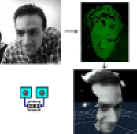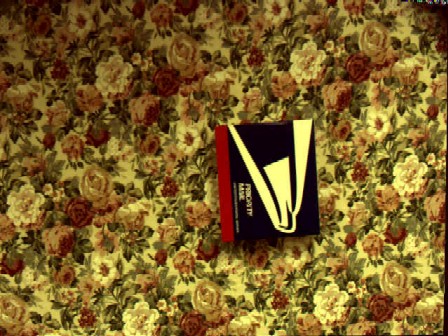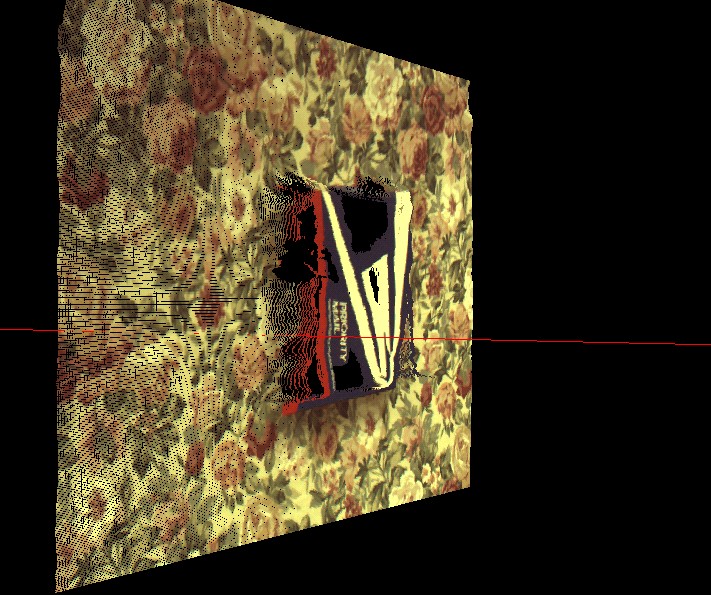
|
|
 |
SRI International's Small Vision System is a
Developer Kit for stereo applications. The SVS libraries can
calibrate a stereo head, rectify the images to account for distortion,
perform stereo correlation to compute a range image, and display the
range image in OpenGL 3D form.
SVS has support for the
stereo heads provided by Videre Design. It can also work with
images provided in memory. SVS is the most efficient,
high-quality stereo range software available for standard or embedded
PCs.
NOTE: SVS is bundled at no extra cost, with
all Videre Design digital stereo heads!
|
Features:
Efficient
SRI International's
patent-pending algorithms are the most efficient ones available -- up to
6 times faster than competing solutions. Realtime capable: 320x240, 32 disparities at frame rates (30 Hz)
with a PIII 700 MHz
Accurate
Excellent range resolution
and accuracy, using imagery from Videre Design cameras. Range is
interpolated to 1/16 pixel, and texture and consistency filters remove
unreliable results.
Flexible
Simple, fast, accurate stereo head calibration using a printable planar
target. You can change lenses, change baseline, even verge your
cameras, and still calibrate them accurately. Lens distortion, all
internal camera parameters, and external camera parameters are computed.
Convenient
Easy-to-use
C++ library API for MS Windows or Linux makes programming applications
simple. Cross-platform display with the FLTK
GUI and OpenGL 3D windows let you display results immediately.
SVS has an interface to MatLab, so stereo images and disparity results
can be sent directly to MatLab for further analysis.
The XVision2
system, developed by Greg Hager at Johns Hopkins University, has an
interface to SVS. XVision2 concentrates on realtime segmentation
and tracking in video images.
Affordable
SVS comes
bundled with Videre Design digital stereo heads. It is also
available as a software system for a modest licensing fee.
|
SVS Kit
Contents:
- Calibration software tool
- Stereo processing libraries
- Driver and capture application software for the MDCS line of stereo
cameras
- Interface to MatLab
- Application and display software (sources included)
- User's Manual
|
Requirements:
- Pentium-compatible PC (Pentium MMX, AMD K6-2 or better) running MS Windows
98/ME/2000/XP with VC++, or Linux
- Videre Design stereo camera head* or stereo images in host
computer memory
- Digital framegrabber* for acquiring live images, if using a stereo
camera.
* items are available from Videre Design, see the order
pages
|
Accurate Range Results
This 640x480 color image, taken with a MEGA-D stereo head,
shows the fine detail of the imagery. Below, the SVS system has converted
the stereo pair into an accurate 3D point cloud. Click on the bottom
image to view an animation of the point cloud. The red ray is the
camera line-of-sight.
SVS was run in standard
mode, with no post-processing of the disparity or 3D image, other than the
standard texture and L/R filters.
Realtime Performance
To fully appreciate the impact of full-motion stereo, you can download these
quicktime movies, which show several people moving in a corridor -- click on
the images to show the movie. The left-hand movie is the video image, the right is the stereo
disparity image. The frame size is 320 x 240, with 24 disparities, at 15 fps.
XVision2 Interface
XVision2
is the newest version of the XVision system developed by Greg Hager, now at
Johns Hopkins University. It is an open-source vision system,
concentrating on realtime segmentation and tracking algorithms for video
data. The new version incorporates and interface to SVS, enlarging its
scope with realtime stereo input. XVision2 is a convenient way to
experiment with new algorithms and applications using stereo.
XVision2 also has a MatLab interface to SVS data, so that
the power of MatLab analysis can be brought to bear on your stereo
data.
Relevant subdirectories for SVS users are:
src/Devices/matlab
src/Examples/showdisp
More Information:



